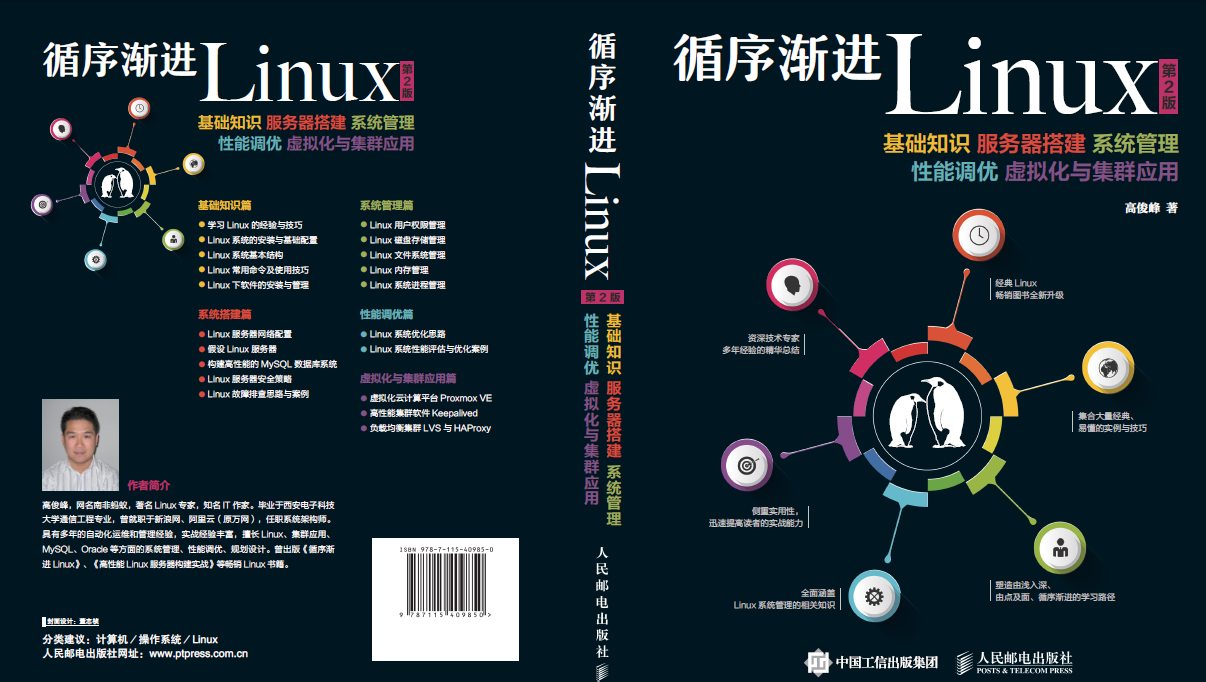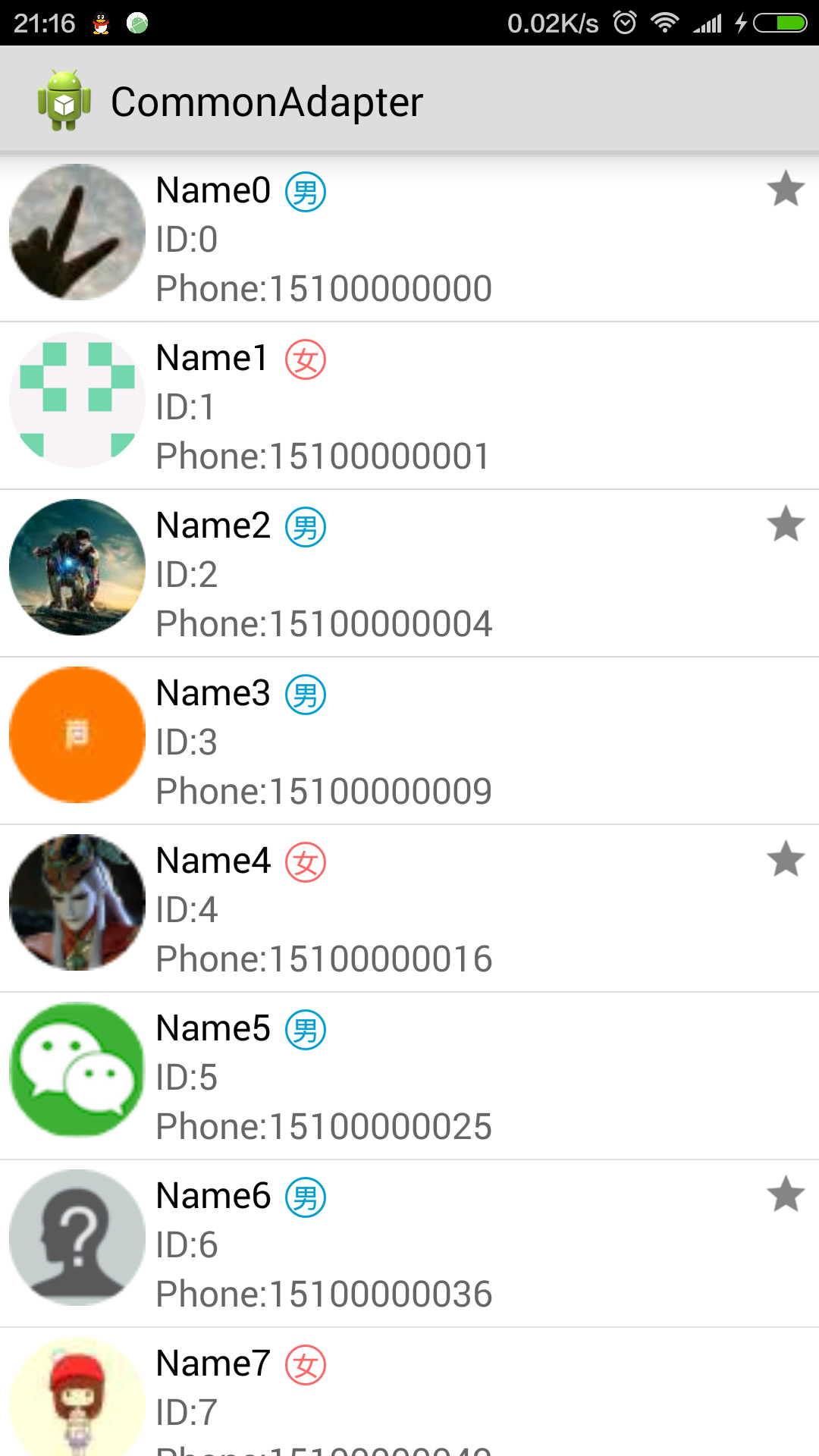編輯:關於android開發
一、簡介
Android的消息機制主要是指Handler的運行機制,那麼什麼是Handler的運行機制那?通俗的來講就是,使用Handler將子線程的Message放入主線程的Messagequeue中,在主線程使用。
二、學習內容
學習Android的消息機制,我們需要先了解如下內容。
平常我們接觸的大多是Handler和Message,今天就讓我們來深入的了解一下他們。
三、代碼詳解
一般而言我們都是這樣使用Handler的
xxHandler.sendEmptyMessage(xxx);
當然還有其他表示方法,但我們深入到源代碼中,會發現,他們最終都調用了一個方法
public boolean sendMessageAtTime(Message msg, long uptimeMillis) {
MessageQueue queue = mQueue;
if (queue == null) {
RuntimeException e = new RuntimeException(
this + " sendMessageAtTime() called with no mQueue");
Log.w("Looper", e.getMessage(), e);
return false;
}
return enqueueMessage(queue, msg, uptimeMillis);
}
sendMessageAtTime()方法,但這依然不是結束,我們可以看到最後一句enqueueMessage(queue, msg, uptimeMillis);按字面意思來說插入一條消息,那麼疑問來了,消息插入了哪裡。
1 boolean enqueueMessage(Message msg, long when) {
2 if (msg.target == null) {
3 throw new IllegalArgumentException("Message must have a target.");
4 }
5 if (msg.isInUse()) {
6 throw new IllegalStateException(msg + " This message is already in use.");
7 }
8
9 synchronized (this) {
10 if (mQuitting) {
11 IllegalStateException e = new IllegalStateException(
12 msg.target + " sending message to a Handler on a dead thread");
13 Log.w(TAG, e.getMessage(), e);
14 msg.recycle();
15 return false;
16 }
17
18 msg.markInUse();
19 msg.when = when;
20 Message p = mMessages;
21 boolean needWake;
22 if (p == null || when == 0 || when < p.when) {
23 // New head, wake up the event queue if blocked.
24 msg.next = p;
25 mMessages = msg;
26 needWake = mBlocked;
27 } else {
28 // Inserted within the middle of the queue. Usually we don't have to wake
29 // up the event queue unless there is a barrier at the head of the queue
30 // and the message is the earliest asynchronous message in the queue.
31 needWake = mBlocked && p.target == null && msg.isAsynchronous();
32 Message prev;
33 for (;;) {
34 prev = p;
35 p = p.next;
36 if (p == null || when < p.when) {
37 break;
38 }
39 if (needWake && p.isAsynchronous()) {
40 needWake = false;
41 }
42 }
43 msg.next = p; // invariant: p == prev.next
44 prev.next = msg;
45 }
46
47 // We can assume mPtr != 0 because mQuitting is false.
48 if (needWake) {
49 nativeWake(mPtr);
50 }
51 }
52 return true;
53 }
進入源代碼,我們發現,我們需要了解一個新類Messagequeue。
雖然我們一般把他叫做消息隊列,但是通過研究,我們發下,它實際上是一種單鏈表的數據結構,而我們對它的操作主要是插入和讀取。
看代碼33-44,學過數據結構,我們可以輕松的看出,這是一個單鏈表的插入末尾的操作。
這樣就明白了,我們send方法實質就是向Messagequeue中插入這麼一條消息,那麼另一個問題隨之而來,我們該如何處理這條消息。
處理消息我們離不開一個重要的,Looper。那麼它在消息機制中又有什麼樣的作用那?
Looper扮演著消息循環的角色,具體而言它會不停的從MessageQueue中查看是否有新消息如果有新消息就會立刻處理,否則就已知阻塞在那裡,現在讓我們來看一下他的代碼實現。
首先是構造方法
private Looper(boolean quitAllowed) {
mQueue = new MessageQueue(quitAllowed);
mThread = Thread.currentThread();
}
可以發現,它將當前線程對象保存了起來。我們繼續
Looper在新線程創建過程中有兩個重要的方法looper.prepare() looper.loop
new Thread(){
public void run(){
Looper.prepare();
Handler handler = new Handler();
Looper.loop();
}
}.start();
我們先來看prepare()方法
1 private static void prepare(boolean quitAllowed) {
2 if (sThreadLocal.get() != null) {
3 throw new RuntimeException("Only one Looper may be created per thread");
4 }
5 sThreadLocal.set(new Looper(quitAllowed));
6 }
咦,我們可以看到這裡面又有一個ThreadLocal類,我們在這簡單了解一下,他的特性,set(),get()方法。
首先ThreadLocal是一個線程內部的數據存儲類,通過它可以在指定的線程中存儲數據,數據存儲後,只有在制定線程中可以獲取存儲的數據,對於其他線程而言則無法獲取到數據。簡單的來說。套用一個列子:
private ThreadLocal<Boolean> mBooleanThreadLocal = new ThreadLocal<Boolean>();//
mBooleanThreadLocal.set(true);
Log.d(TAH,"Threadmain"+mBooleanThreadLocal.get());
new Thread("Thread#1"){
public void run(){
mBooleanThreadLocal.set(false);
Log.d(TAH,"Thread#1"+mBooleanThreadLocal.get());
};
}.start();
new Thread("Thread#2"){
public void run(){
Log.d(TAH,"Thread#2"+mBooleanThreadLocal.get());
};
}.start();
上面的代碼運行後,我們會發現,每一個線程的值都是不同的,即使他們訪問的是同意個ThreadLocal對象。
那麼我們接下來會在之後分析源碼,為什麼他會不一樣。現在我們跳回prepare()方法那一步,loop()方法源碼貼上
1 public static void loop() {
2 final Looper me = myLooper();
3 if (me == null) {
4 throw new RuntimeException("No Looper; Looper.prepare() wasn't called on this thread.");
5 }
6 final MessageQueue queue = me.mQueue;
7
8 // Make sure the identity of this thread is that of the local process,
9 // and keep track of what that identity token actually is.
10 Binder.clearCallingIdentity();
11 final long ident = Binder.clearCallingIdentity();
12
13 for (;;) {
14 Message msg = queue.next(); // might block
15 if (msg == null) {
16 // No message indicates that the message queue is quitting.
17 return;
18 }
19
20 // This must be in a local variable, in case a UI event sets the logger
21 Printer logging = me.mLogging;
22 if (logging != null) {
23 logging.println(">>>>> Dispatching to " + msg.target + " " +
24 msg.callback + ": " + msg.what);
25 }
26
27 msg.target.dispatchMessage(msg);
28
29 if (logging != null) {
30 logging.println("<<<<< Finished to " + msg.target + " " + msg.callback);
31 }
32
33 // Make sure that during the course of dispatching the
34 // identity of the thread wasn't corrupted.
35 final long newIdent = Binder.clearCallingIdentity();
36 if (ident != newIdent) {
37 Log.wtf(TAG, "Thread identity changed from 0x"
38 + Long.toHexString(ident) + " to 0x"
39 + Long.toHexString(newIdent) + " while dispatching to "
40 + msg.target.getClass().getName() + " "
41 + msg.callback + " what=" + msg.what);
42 }
43
44 msg.recycleUnchecked();
45 }
46 }
首先loop()方法,獲得這個線程的Looper,若沒有拋出異常。再獲得新建的Messagequeue,在這裡我們有必要補充一下Messagequeue的next()方法。
1 Message next() {
2 // Return here if the message loop has already quit and been disposed.
3 // This can happen if the application tries to restart a looper after quit
4 // which is not supported.
5 final long ptr = mPtr;
6 if (ptr == 0) {
7 return null;
8 }
9
10 int pendingIdleHandlerCount = -1; // -1 only during first iteration
11 int nextPollTimeoutMillis = 0;
12 for (;;) {
13 if (nextPollTimeoutMillis != 0) {
14 Binder.flushPendingCommands();
15 }
16
17 nativePollOnce(ptr, nextPollTimeoutMillis);
18
19 synchronized (this) {
20 // Try to retrieve the next message. Return if found.
21 final long now = SystemClock.uptimeMillis();
22 Message prevMsg = null;
23 Message msg = mMessages;
24 if (msg != null && msg.target == null) {
25 // Stalled by a barrier. Find the next asynchronous message in the queue.
26 do {
27 prevMsg = msg;
28 msg = msg.next;
29 } while (msg != null && !msg.isAsynchronous());
30 }
31 if (msg != null) {
32 if (now < msg.when) {
33 // Next message is not ready. Set a timeout to wake up when it is ready.
34 nextPollTimeoutMillis = (int) Math.min(msg.when - now, Integer.MAX_VALUE);
35 } else {
36 // Got a message.
37 mBlocked = false;
38 if (prevMsg != null) {
39 prevMsg.next = msg.next;
40 } else {
41 mMessages = msg.next;
42 }
43 msg.next = null;
44 if (DEBUG) Log.v(TAG, "Returning message: " + msg);
45 msg.markInUse();
46 return msg;
47 }
48 } else {
49 // No more messages.
50 nextPollTimeoutMillis = -1;
51 }
52
53 // Process the quit message now that all pending messages have been handled.
54 if (mQuitting) {
55 dispose();
56 return null;
57 }
58
59 // If first time idle, then get the number of idlers to run.
60 // Idle handles only run if the queue is empty or if the first message
61 // in the queue (possibly a barrier) is due to be handled in the future.
62 if (pendingIdleHandlerCount < 0
63 && (mMessages == null || now < mMessages.when)) {
64 pendingIdleHandlerCount = mIdleHandlers.size();
65 }
66 if (pendingIdleHandlerCount <= 0) {
67 // No idle handlers to run. Loop and wait some more.
68 mBlocked = true;
69 continue;
70 }
71
72 if (mPendingIdleHandlers == null) {
73 mPendingIdleHandlers = new IdleHandler[Math.max(pendingIdleHandlerCount, 4)];
74 }
75 mPendingIdleHandlers = mIdleHandlers.toArray(mPendingIdleHandlers);
76 }
77
78 // Run the idle handlers.
79 // We only ever reach this code block during the first iteration.
80 for (int i = 0; i < pendingIdleHandlerCount; i++) {
81 final IdleHandler idler = mPendingIdleHandlers[i];
82 mPendingIdleHandlers[i] = null; // release the reference to the handler
83
84 boolean keep = false;
85 try {
86 keep = idler.queueIdle();
87 } catch (Throwable t) {
88 Log.wtf(TAG, "IdleHandler threw exception", t);
89 }
90
91 if (!keep) {
92 synchronized (this) {
93 mIdleHandlers.remove(idler);
94 }
95 }
96 }
97
98 // Reset the idle handler count to 0 so we do not run them again.
99 pendingIdleHandlerCount = 0;
100
101 // While calling an idle handler, a new message could have been delivered
102 // so go back and look again for a pending message without waiting.
103 nextPollTimeoutMillis = 0;
104 }
105 }
從24-30我們可以看到,他遍歷了整個queue找到msg,若是msg為null,我們可以看到50,他把nextPollTimeoutMillis = -1;實際上是等待enqueueMessage的nativeWake來喚醒。較深的源碼涉及了native層代碼,有興趣可以研究一下。簡單來說next()方法,在有消息是會返回這條消息,若沒有,則阻塞在這裡。
我們回到loop()方法27msg.target.dispatchMessage(msg);我們看代碼
public void dispatchMessage(Message msg) {
if (msg.callback != null) {
handleCallback(msg);
} else {
if (mCallback != null) {
if (mCallback.handleMessage(msg)) {
return;
}
}
handleMessage(msg);
}
}
msg.target實際上就是發送這條消息的Handler,我們可以看到它將msg交給dispatchMessage(),最後調用了我們熟悉的方法handleMessage(msg);
三、總結
到目前為止,我們了解了android的消息機制流程,但它實際上還涉及了深層的native層方法,這裡有一篇博客專門講解這個轉載一下
http://www.cnblogs.com/angeldevil/p/3340644.html。
 自定義控件之 圓形 / 圓角 ImageView,圓角imageview
自定義控件之 圓形 / 圓角 ImageView,圓角imageview
自定義控件之 圓形 / 圓角 ImageView,圓角imageview一、問題在哪裡? 問題來源於app開發中一個很常見的場景——用戶頭像要展示
 《循序漸進Linux》第二版即將出版發行(附封面)
《循序漸進Linux》第二版即將出版發行(附封面)
《循序漸進Linux》第二版即將出版發行(附封面)從《循序漸進Linux》第一版發布,到現在已經近6年了,6年的時間,技術發生了很大的變化,Linux系統的內核版本從2.
 計算機網絡和Internet之核心網絡,計算機網絡internet
計算機網絡和Internet之核心網絡,計算機網絡internet
計算機網絡和Internet之核心網絡,計算機網絡internet1.網狀的路由器 路由器的鏈接組成了網絡的核心。 任何一個路由器,或者某條線路掛掉,但是網絡還是通的,這
 高靈活低耦合Adapter快速開發攻略,耦合adapter攻略
高靈活低耦合Adapter快速開發攻略,耦合adapter攻略
高靈活低耦合Adapter快速開發攻略,耦合adapter攻略Android開發中經常需要使用Adapter。 傳統方法是自定義一個Adapter並繼承AndroidSD